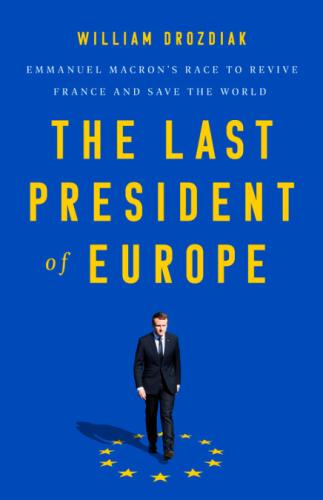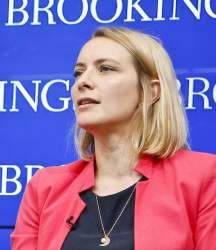The following is an excerpt from Reopening the World: How to Save Lives and Livelihoods, a new report where Brookings experts offer ideas to help policymakers protect lives and save livelihoods in the midst of the current COVID-19 pandemic.
 Two months after the beginning of the COVID-19 lockdown, with a death toll among the top four in Europe (along with the U.K., Italy, and Spain), France began to reopen gradually. Over April, the numbers of case related hospitalizations and patients in intensive care had started to decrease regularly, allowing the country to enter a new normal on May 11. Yet, the strict eight week lockdown will undoubtedly leave a trace. A series of controversial decisions and communications blunders, fueled by a general fear of what’s ahead, have nourished public mistrust of President Emmanuel Macron and his government. In the long run, the challenge for the French executive is to learn to manage a deeply apprehensive public and convince the French people to accept a degree of uncertainty in the scope, geographic distribution, and evolution of the reopening.
Two months after the beginning of the COVID-19 lockdown, with a death toll among the top four in Europe (along with the U.K., Italy, and Spain), France began to reopen gradually. Over April, the numbers of case related hospitalizations and patients in intensive care had started to decrease regularly, allowing the country to enter a new normal on May 11. Yet, the strict eight week lockdown will undoubtedly leave a trace. A series of controversial decisions and communications blunders, fueled by a general fear of what’s ahead, have nourished public mistrust of President Emmanuel Macron and his government. In the long run, the challenge for the French executive is to learn to manage a deeply apprehensive public and convince the French people to accept a degree of uncertainty in the scope, geographic distribution, and evolution of the reopening.
In the long run, the challenge for the French executive is to learn to manage a deeply apprehensive public and convince the French people to accept a degree of uncertainty in the scope, geographic distribution, and evolution of the reopening.
AVOIDING COLLAPSE
As Prime Minister Édouard Philippe stressed in an April 28 address to the National Assembly, reopening the country was critical to avoid “collapse.” With its vibrant tourism and entertainment industries shuttered, France’s economy suffered acutely under lockdown. Its GDP contracted by 5.8 percent in the first quarter of 2020, compared to 1.9 percent in Germany, and roughly 5 percent in Italy and Spain. Many professional sectors, home to most small- and medium-sized enterprises such as shops, hotels, restaurants, construction, and car rentals, closed almost entirely. In March and April, they alone accounted for 64 percent of requests for partial unemployment benefits. The lockdown also took a heavy social toll: domestic violence increased by 30 percent, remote education left many behind (5–8 percent of students were “lost” to teachers who couldn’t reach them), and after two months indoors, most could not wait to visit their loved ones.
Thanks to a robust healthcare sector and unemployment support, however, confinement under the coronavirus has proven an acceptable evil for the French. Only 13 percent reported finding their lives “unpleasant” under lockdown and they were, among Europeans, the second least concerned (after Germans) about the consequences of COVID-19 on their individual employment and economic prospects. Reopening amid an active pandemic is a dangerous endeavor, and fatal mistakes are bound to occur. Yet President Macron and his government persevered, all the while pleading to the French for flexibility. Indeed, the only way forward, as Philippe repeated on May 7, is to learn to live with the virus.
REOPENING SCHOOLS AND WORKPLACES
To prevent a second wave of infections, the government announced a threefold reopening strategy: protect (with masks and social distancing), test (massively), and isolate (COVID19-positive people and their contacts). But that is only the public health part. For everything else, the question is what to open, how quickly, and how safely.
In a country where employment of both parents is very high (74 percent of parenting women and 87 percent of parenting men work), the priority is to reopen schools. Teachers returned to the classroom on May 11, followed by a gradual reopening of nursery schools, kindergartens, and primary schools on May 12. The virus has spread unevenly across France, as the strict lockdown protected large parts of the west and southwest from severe outbreaks. A map classifying the country’s départements as red or green depending on the level of infections was thus released by the government, and reopening measures differed accordingly. Middle schools in green départements, for instance, reopened on May 18, while those in red areas had to wait. The government also accepted that mayors fine tune their own reopenings according to situations on the ground, in coordination with prefects, who represent the state. Yet differences across the territory prove challenging for a country of Jacobin tradition that stresses unity of the Republic.
Even since reopening, life has been nothing like the status quo ante. In the first phase of deconfinement, telework and “differentiated schedules” remain strongly encouraged. In the Paris region, written justification is needed to ride public transportation at peak hours. Travel beyond 100 kilometers is permitted only in exceptional situations with the proper justification, and the country stays closed to international travel. Hotels, restaurants, and cafés, as well as high schools will not reopen until further notice. All these decisions will be closely re-evaluated at every turn over the summer, when phases two or three of reopening are reached, depending on the rate of new infections.
Seeking to strike a delicate balance between civil liberties and public health, the French government largely refrained from imposing the most drastic health measures. Wearing a mask is not required in the street despite being compulsory on public transportation, in elementary schools (only for staff and teachers), in middle schools, and in any business that so chooses. In a much–anticipated decision, the government authorized the French to travel for summer vacations within the country in July and August. A contact tracing app, “StopCovid,” is set to be released, but only after having been debated in the national parliament. And although President Macron had once suggested that vulnerable people might have to stay home longer, he and the government ultimately opted to defer to citizens to exercise their sense of civic duty and responsibility.
PREEMPTIVE ANXIETY
What might seem like excessive caution on the part of the government can be explained by the fact that, coming out of lockdown, the mood in France has been somber and apprehensive. Surveys in April showed that the French were consuming more sleeping pills, anxiety medication (+7 percent) and alcohol (+30 percent) than usual. One-fifth reported problems with self-esteem, while a third said they couldn’t concentrate. And yet, because mitigation mechanisms sheltered many from acute pain, it is the future that the French especially dread. In public opinion studies, some confided they were terrorized by the prospect of reopening; many worried that life would feel abnormal and dangerous. Compared to Italians, Spanish, Britons, and Germans, the French were the most fearful that either they (54 percent) or a loved one (71 percent) would catch the virus.
Unlike in the U.S., where protests erupted in favor of opening the economy, many in France worried that the government’s decisions were premature. In April, a majority of French (57 percent) expressed their support for a reopening date beyond the one set by the government. Polls also showed support for more drastic measures than those proposed by the executive: 70 percent favored longer stay-at-home orders for at-risk people; 60 percent wanted an obligatory contact tracing app; and 57 percent supported restrictions of movement within the country. Three out of four wanted masks to be compulsory outside the home at all times. These fears translated into demands by professional sectors, whose representatives worried employees faced unnecessary risks: major transportation unions, for instance, demanded access to hospital-level personal protective equipment.
As for school reopenings—as fervently awaited as they were feared—the public expressed outrage over the Élysée’s decision: in fact, six in 10 French were opposed. This sentiment was only exacerbated when press reports revealed that the government’s guidelines diverged from the recommendation of Macron’s scientific council that schools remain closed until September. The president tried to backtrack, insisting that his goal was to ensure all children who needed to go back to school could. But in choosing the political middle ground between strict health experts’ recommendations and laissez-faire, Macron took the risk of leaving everyone unhappy.
PUBLIC MISTRUST AND ANGER
At the heart of post-confinement anxiety lies a deeper problem: low public confidence in the government. In mid-April, 45 percent of French felt “angry” about the situation, and a staggering 62 percent were dissatisfied with the government’s management of the crisis, up 16 points from March. In this regard, the French stood out among Europeans: while 60 percent of Germans, 41 percent of Italians, and 29 percent of Britons said at the end of April that their governments had “managed the coronavirus better than most other countries,” only 12 percent of French agreed.
Indeed, for many, the government’s original sins lie in the early stages of Macron’s “war” against the coronavirus: first, for allowing the first round of municipal elections to take place in mid-March although the pandemic was already gaining momentum across France; and second, for the confusion and lack of transparency over masks and testing. Indeed, weeks of reporting closely monitored by the homebound French revealed frontline health professionals with inadequate equipment while the government appeared to minimize the importance of masks and large scale testing. At best, inconsistencies in official discourse laid bare the executive’s lack of preparedness and internal tensions. At worst, political extremes and others accused the government of spreading “State lies” to cover up the shortage of medical supplies.
Although the government reassured the public that masks would be widely available and that testing capacity would reach 700,000 per week by May 11, skepticism solidified. After the prime minister’s first speech on “de-confinement,” only 46 percent believed that he was “telling the truth.” A majority (55 percent) said they did not trust the government to successfully reopen the country. Trust was highest among supporters of Macron’s La République en Marche (89 percent), and lowest among far right Rassemblement National and far left La France Insoumise voters (21 percent and 31 percent, respectively). This underlines persistent polarization between Macron’s camp and the populist extremes, demonstrating that entrenched biases held before the crisis have only been reinforced.
Although Macron initially benefitted from a small “rally around the flag” effect, his approval ratings then plummeted, especially compared to other European leaders. With a meager 38 percent approval coming out of confinement, the French president trailed German, Italian, and British leaders by 20 to 30 points. This reality, though, should be put into perspective: Macron is still faring better than during the dark days of the yellow vest crisis, and the French have been 87 structurally unhappy with their presidents for some time.
Nonetheless, with locally tailored reopenings and myriad guidelines to design, implement, and follow, France’s future remains blurry at best. The government, like the president, is disliked when it appears to exercise power vertically. The public appears more responsive to an apologetic and humble Macron, like the one who addressed them on April 13 at the height of the crisis, and was briefly rewarded with a subsequent bump in the polls.
As the executive asks the French for flexibility and benevolence as it moves forward with deconfinement, it is learning to refrain from imposing top-down solutions. Building on lessons learned from the yellow vest protests, Macron and his government—often described as “elitist” and “out-of-touch”—should continue to empower local authorities like mayors, trusted by 75 percent of French, to implement recommendations appropriate to their municipalities, as well as trust citizens to act responsibly in following guidelines. Only by demonstrating faith in its own citizens will Macron’s government, in turn, begin to win back their trust
The Brookings Institution is committed to quality, independence, and impact.
We are supported by a diverse array of funders. In line with our values and policies, each Brookings publication represents the sole views of its author(s).









Commentary
Reopening the World: The day France reopened
June 16, 2020